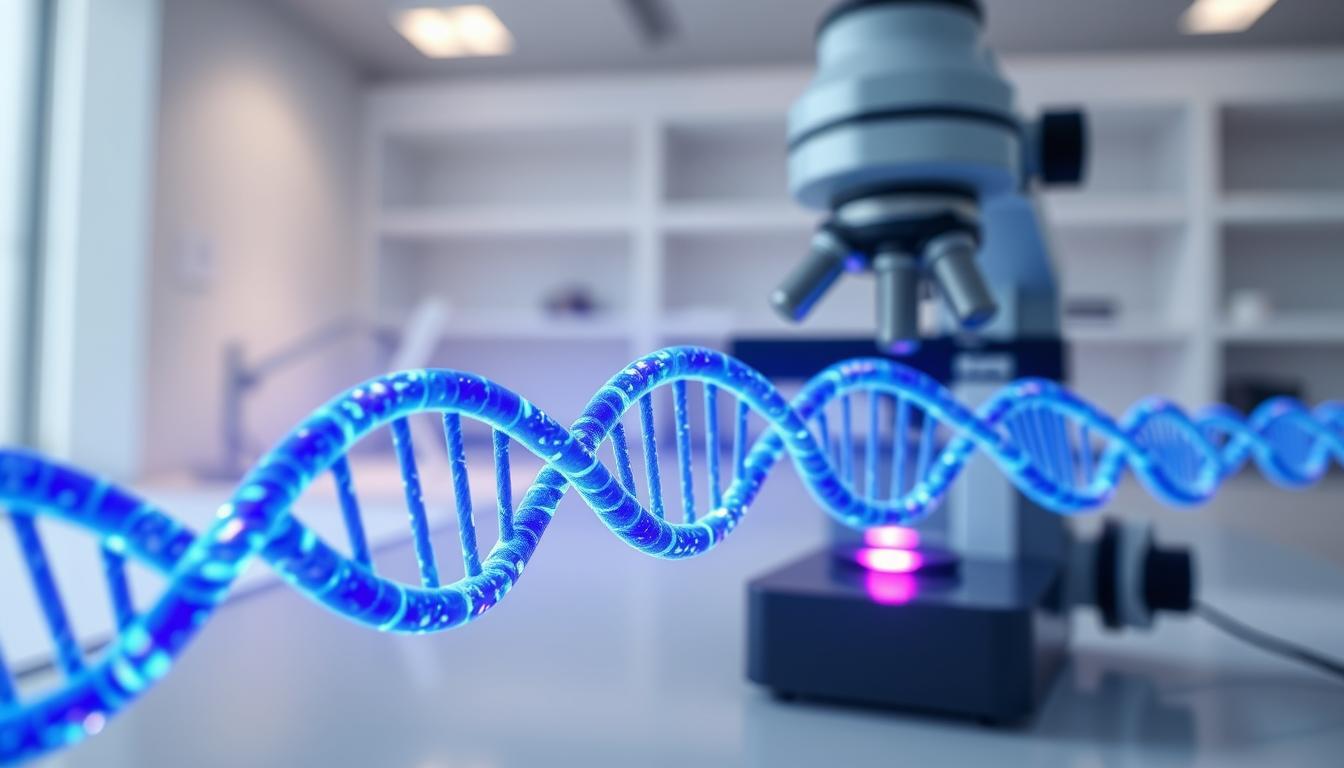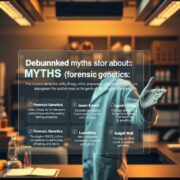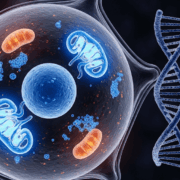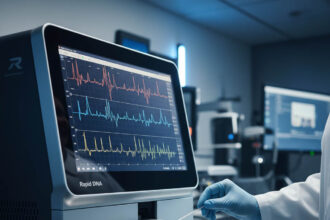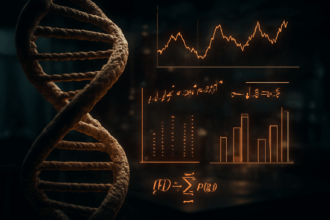- Understanding Mitochondrial DNA: The Maternal Genetic Legacy
- What Makes mtDNA Different from Nuclear DNA
- The Maternal Inheritance Pattern
- Stability and Mutation Rates of mtDNA
- The Science Behind mtDNA Analysis
- Structure of the Mitochondrial Genome
- Hypervariable Regions and Their Significance
- Haplogroups and Their Global Distribution
- Types of Mitochondrial DNA Testing Available Today
- The Process of mtDNA Analysis in Modern Laboratories
- Sample Collection Methods
- Laboratory Techniques for mtDNA Sequencing
- Computational Analysis of Mitochondrial Genome Data
- Tracing Your Maternal Ancestry Through mtDNA
- Understanding Maternal Haplogroups
- Connecting with Distant Relatives
- Case Studies: Remarkable Ancestry Discoveries
- Forensic Applications of mtDNA Analysis
- Identifying Human Remains
- Solving Cold Cases with Mitochondrial DNA
- Legal Considerations and Admissibility
- Medical and Research Applications
- Interpreting Your mtDNA Results
- Understanding Haplogroup Classifications
- Making Sense of Matches and Genetic Distance
- Privacy Considerations and Ethical Implications
- Conclusion: The Future of Mitochondrial DNA Research
- FAQ
- What is mitochondrial DNA (mtDNA) analysis, and how is it used in forensic science?
- How does mtDNA differ from nuclear DNA, and why is it significant?
- What are hypervariable regions in mtDNA, and why are they important?
- What is the difference between HVR1, HVR2, and full mitochondrial genome sequencing?
- How is mtDNA analysis used in tracing maternal ancestry?
- What are the limitations and challenges associated with mtDNA analysis?
- How is mtDNA evidence handled in a court of law?
- What are the medical and research applications of mtDNA analysis?
- How can I interpret my mtDNA results, and what do they mean?
- What are the future prospects and potential advancements in mtDNA research?
Mitochondrial DNA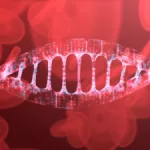 DNA, or Deoxyribonucleic Acid, is the genetic material found in cells, composed of a double helix structure. It serves as the genetic blueprint for all living organisms. Read Full Definition mitochondrial dna analysis has revolutionized the field of genetic ancestry and forensic science
DNA, or Deoxyribonucleic Acid, is the genetic material found in cells, composed of a double helix structure. It serves as the genetic blueprint for all living organisms. Read Full Definition mitochondrial dna analysis has revolutionized the field of genetic ancestry and forensic science
This powerful tool has helped solve crimes and connect people with their ancestral heritage. As the field continues to evolve, understanding the principles and applications of mtdna analysis is crucial for forensic professionals and researchers alike.
Key Takeaways
- Understanding the role of mitochondrial DNA in genetic ancestry and forensic science.
- The significance of mitochondrial dna analysis in identifying human remains.
- Applications of mtdna analysis in forensic science and crime solving.
- The importance of maternal lineage in genetic research.
- Emerging trends and future directions in mitochondrial DNA research.
Understanding Mitochondrial DNA: The Maternal Genetic Legacy
The study of mitochondrial DNA offers a unique window into the maternal genetic legacy of individuals and populations. Mitochondrial DNA (mtDNA) is a crucial component in understanding human genetics, particularly in tracing maternal lineage and exploring genetic heritage.
What Makes mtDNA Different from Nuclear DNA
Mitochondrial DNA is distinct from nuclear DNA in several key aspects. Unlike nuclear DNA, which is inherited from both parents, mtDNA is inherited solely from one’s mother. This maternal inheritance pattern makes mtDNA a valuable tool for tracing maternal lineage. Additionally, mtDNA is found outside the nucleus in the mitochondria, the energy-producing structures within cells. Mitochondrial DNA is also much smaller than nuclear DNA, consisting of approximately 16,569 base pairs, and it has a different replication mechanism.
The Maternal Inheritance Pattern
The maternal inheritance pattern of mtDNA means that it is passed down from mother to child without recombination, unlike nuclear DNA which undergoes recombination during reproduction. This characteristic allows researchers to trace maternal lineage over many generations without the genetic material being mixed with paternal DNA. As a result, mtDNA is particularly useful for studying maternal ancestry and population dynamics.
Stability and Mutation Rates of mtDNA
Mitochondrial DNA has a relatively high mutation rate compared to nuclear DNA. These mutations can occur due to errors during replication or environmental factors. While the high mutation rate can complicate some analyses, it also provides a rich source of information for tracing evolutionary history and identifying genetic disorders related to mitochondrial function. Researchers have developed methods to account for these mutations, making mtDNA a powerful tool for genetic studies.
| Characteristics | Mitochondrial DNA | Nuclear DNA |
|---|---|---|
| Inheritance Pattern | Maternal | Biparental |
| Size | Approximately 16,569 base pairs | Approximately 3.2 billion base pairs |
| Mutation Rate | Higher | Lower |
Understanding the unique characteristics of mitochondrial DNA is essential for appreciating its role in genetic studies and ancestry tracing. The distinct features of mtDNA make it a valuable tool for researchers and individuals seeking to understand their maternal genetic heritage.
The Science Behind mtDNA Analysis
Understanding the science behind mtDNA analysis is crucial for appreciating its applications in forensic science, medical research, and ancestry tracing. Mitochondrial DNA (mtDNA) analysis has become a powerful tool in various fields due to its unique characteristics, such as maternal inheritance and high mutation rates.
Structure of the Mitochondrial Genome
The mitochondrial genome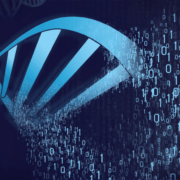
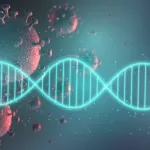 Genes are DNA segments (or RNA in some viruses) that dictate cellular processes, traits, and hereditary information, promoting genetic diversity and evolution in living organisms. Read Full Definition, including 13 proteins, 22 tRNAs, and 2 rRNAs crucial for mitochondrial function. The mitochondrial genome analysis involves sequencing this DNA to identify variations that can inform about ancestry, genetic disorders, and evolutionary history.
Genes are DNA segments (or RNA in some viruses) that dictate cellular processes, traits, and hereditary information, promoting genetic diversity and evolution in living organisms. Read Full Definition, including 13 proteins, 22 tRNAs, and 2 rRNAs crucial for mitochondrial function. The mitochondrial genome analysis involves sequencing this DNA to identify variations that can inform about ancestry, genetic disorders, and evolutionary history.
The structure of the mitochondrial genome is compact, with little non-coding DNA. This compactness, along with its maternal inheritance pattern, makes mtDNA a valuable tool for tracing maternal lineage.
Hypervariable Regions and Their Significance
The mitochondrial genome contains hypervariable regions (HVRs), particularly HVR1 and HVR2, which are prone to high mutation rates. These regions are significant in mtDNA research because they provide the variability needed to distinguish between individuals and populations.
- HVR1 and HVR2 are used in forensic analysis to identify individuals.
- Variations in these regions help in tracing maternal ancestry.
- The high mutation rate in HVRs makes them useful for recent evolutionary studies.
Haplogroups and Their Global Distribution
Mitochondrial DNA haplogroups are classifications used to group different lineages of the mitochondrial genome. These haplogroups are defined by specific mutations and are associated with different geographic regions.
| Haplogroup | Geographic Association | Defining Mutations |
|---|---|---|
| H | Europe | 7028C, 11719A |
| M | Asia, Africa | 10398G, 16189C |
| L | Africa | 3594C, 7256T |
Understanding haplogroups and their global distribution is essential for mitochondrial genome analysis, as it provides insights into human migration patterns and evolutionary history.
Types of Mitochondrial DNA Testing Available Today
Mitochondrial DNA testing is not a one-size-fits-all approach; various tests cater to different needs and preferences. The choice of test depends on several factors, including the desired depth of information, cost considerations, and the specific goals of the individual undergoing testing.
HVR1 and HVR2 Testing
HVR1 and HVR2 testing focuses on the hypervariable regions of the mitochondrial genome. This type of testing is often used for genealogical purposes, providing insights into an individual’s maternal lineage. While it offers a good initial overview, it may not provide the comprehensive data Information in analog or digital form that can be transmitted or processed. Read Full Definition that some researchers require.
Information in analog or digital form that can be transmitted or processed. Read Full Definition that some researchers require.
Full Mitochondrial Genome Sequencing
For a more detailed analysis, full mitochondrial genome sequencing is available. This comprehensive test sequences the entire mitochondrial genome, offering a more precise"Precise" refers to the degree of closeness or consistency between multiple measurements or values taken under the same conditions. It indicates how well these measurements agree with each other, regardless of whether they are accurate Read Full Definition understanding of an individual’s mitochondrial DNA. It is particularly valuable for researchers and those seeking a deeper understanding of their maternal ancestry.
Choosing the Right Test for Your Needs
Selecting the appropriate mitochondrial DNA test involves considering several factors. Two critical aspects to consider are:
Cost Considerations
The cost of mitochondrial DNA testing can vary significantly, depending on the type of test and the laboratory conducting the analysis. It’s essential to balance the cost with the level of detail required.
Accuracy and Depth of Information
The accuracyIn scientific and measurement contexts, "accuracy" refers to the degree of proximity or closeness between a measured value and the true or actual value of the measured quantity. Accuracy indicates how well a measurement reflects Read Full Definition and depth of information provided by mitochondrial DNA tests vary. Full genome sequencing offers the most comprehensive data, while HVR1 and HVR2 testing provide a more general overview. Understanding the trade-offs is crucial in making an informed decision.
In conclusion, the variety of mitochondrial DNA testing options available today allows individuals to choose a test that aligns with their specific needs, whether for genealogical research, forensic analysis, or medical purposes. By understanding the differences between tests like HVR1 and HVR2 testing and full mitochondrial genome sequencing, individuals can make informed decisions about their genetic testing.
The Process of mtDNA Analysis in Modern Laboratories
The analysis of mitochondrial DNA (mtDNA) in modern laboratories is a complex process that involves several meticulous steps, from the initial collection of samples to the final interpretation of the data.
Sample Collection Methods
Sample collection for mtDNA analysis can be performed using various methods, including buccal swabs, blood samples, or even historical tissue samples. The choice of sample type depends on the specific requirements of the analysis and the availability of the sample material. For instance, buccal swabs are commonly used due to their non-invasive nature and the ease of collection.

Laboratory Techniques for mtDNA Sequencing
Laboratory techniques for mtDNA sequencing involve several critical steps, including DNA extraction, PCR amplification, and sequencing. Next-generation sequencing (NGS) technologies have revolutionized mtDNA analysis by enabling the rapid sequencing of entire mitochondrial genomes. This has significantly enhanced the resolution and accuracy of mtDNA analysis.
Computational Analysis of Mitochondrial Genome Data
The computational analysis of mitochondrial genome data is a crucial step that involves the comparison of obtained sequences with reference sequences to identify haplogroups and mutations.
“The precision in computational analysis is paramount for accurate haplogroup determination and understanding the genetic relationships between different samples.”
Advanced computational tools and databases are utilized to ensure the accuracy and reliability of the analysis.
Tracing Your Maternal Ancestry Through mtDNA
Mitochondrial DNA (mtDNA) analysis has revolutionized the field of genetic genealogy by providing a powerful tool for tracing maternal ancestry. This section explores how mtDNA can be used to understand maternal haplogroups, connect with distant relatives, and uncover remarkable ancestry discoveries.
Understanding Maternal Haplogroups
Maternal haplogroups are classifications used to group individuals based on their shared mitochondrial DNA characteristics, indicating a common maternal ancestor. These haplogroups are defined by specific mutations in the mtDNA sequence and are named with letters (e.g., H, M, U) followed by a series of numbers and letters that denote subclades. Understanding one’s maternal haplogroup can provide insights into the ancient origins and migration patterns of one’s maternal lineage.
For instance, individuals belonging to haplogroup H are predominantly found in Europe, with a high frequencyFrequency is a fundamental concept in physics and wave theory. It refers to the number of times a specific point on a wave, such as a crest or trough, passes a fixed reference point in Read Full Definition in the Iberian Peninsula. This information can be crucial for genealogists and anthropologists studying the migration and settlement patterns of ancient populations.
Connecting with Distant Relatives
One of the significant benefits of mtDNA testing is the ability to connect with distant relatives who share a common maternal ancestor. By comparing mtDNA sequences, individuals can identify potential relatives and expand their family trees beyond traditional genealogical records. This is particularly useful for adoptees or those with unknown or unclear family histories.
mtDNA testing can also facilitate connections within specific haplogroups, allowing individuals to join communities of people who share a common maternal lineage. These connections can lead to collaborative research efforts, sharing of genealogical information, and a broader understanding of one’s ancestral heritage.
Case Studies: Remarkable Ancestry Discoveries
Several case studies illustrate the power of mtDNA analysis in uncovering remarkable ancestry discoveries. For example, mtDNA testing has helped individuals trace their maternal lineage back to specific ancient cultures or historical figures.
Breaking Through Genealogical Brick Walls
In some cases, traditional genealogical research hits a “brick wall” due to lack of records or unclear family histories. mtDNA analysis can provide a breakthrough by connecting individuals with distant relatives who share a common maternal ancestor, thus expanding their genealogical knowledge.
Uncovering Unexpected Heritage
mtDNA testing can also reveal unexpected heritage by identifying maternal haplogroups that are associated with specific geographic regions or ethnic groups. This can lead to surprising discoveries about one’s ancestral origins and migration patterns.
| Haplogroup | Geographic Distribution | Notable Features |
|---|---|---|
| H | Predominantly Europe | High frequency in Iberian Peninsula |
| M | Found in Asia, Australia, and the Americas | Associated with early human migrations out of Africa |
| U | Present in Europe, North Africa, and the Middle East | Diverse subclades indicating complex migration history |
Forensic Applications of mtDNA Analysis
Mitochondrial DNA (mtDNA) analysis has emerged as a crucial tool in forensic science, offering unique advantages in various investigative contexts. Its high sensitivityIn the context of laboratory equipment or analytical techniques, the term "sensitive" describes the capability of a machine or method to detect even very small amounts or concentrations of a substance. Sensitivity is a quantitative Read Full Definition and ability to analyze degraded DNA samples make it particularly valuable in forensic investigations.
Identifying Human Remains
One of the primary forensic applications of mtDNA analysis is in the identification of human remains. When traditional DNA analysis is not possible due to degradation or contaminationContamination - The unwanted transfer of material from another source to a piece of physical evidence. The inadvertent touching of a weapon, thereby adding fingerprints to it is an example of evidence contamination. Read Full Definition, mtDNA can provide a viable alternative. For instance, in cases where remains are highly decomposed or charred, mtDNA analysis can help identify the individual by comparing their mtDNA with that of known relatives or personal items.
| Case Type | mtDNA Analysis Benefit |
|---|---|
| Highly decomposed remains | Analysis of degraded DNA |
| Charred remains | Resistant to degradation due to high copy number |
| Missing persons | Comparison with relatives or personal items |
Solving Cold Cases with Mitochondrial DNA
mtDNA analysis has also proven instrumental in solving cold cases where traditional forensic evidence
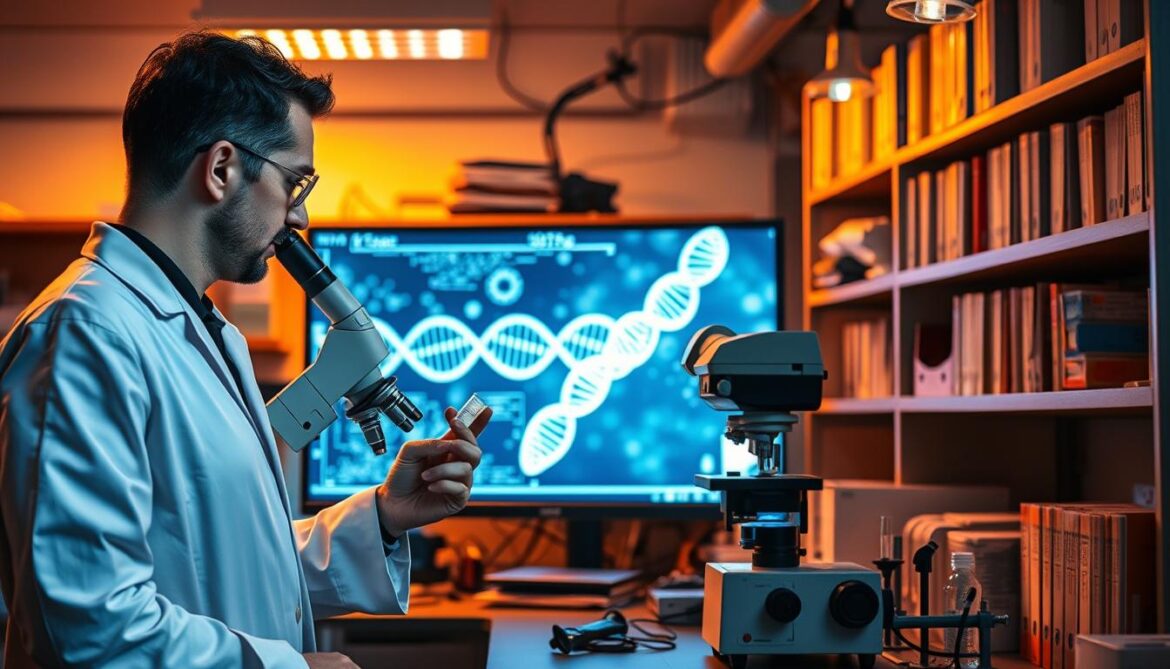
Legal Considerations and Admissibility
The admissibility of mtDNA evidence in court is subject to certain legal considerations. While mtDNA analysis is a powerful tool, its results must be interpreted with caution due to the potential for heteroplasmy—a mixture of different mtDNA types within an individual. Courts require rigorous validationValidation, often referred to as method validation, is a crucial process in the laboratory when introducing a new machine, technology, or analytical technique. It involves a series of systematic steps and assessments to ensure that Read Full Definition of mtDNA analysis protocols to ensure the reliability and integrity of the evidence presented.
Key Considerations for Admissibility:
- Validation of laboratory protocols
- Expert testimony on the reliability of mtDNA analysis
- Understanding of mtDNA inheritance patterns
Medical and Research Applications
Mitochondrial DNA analysis has far-reaching implications beyond ancestry and forensic science, significantly impacting medical research and our understanding of various diseases. The study of mtDNA has become crucial in understanding the genetic basis of several conditions, offering new avenues for diagnosis and treatment.
Mitochondrial Diseases and Disorders
Mitochondrial diseases are a group of disorders caused by dysfunctional mitochondria, often due to mutations in mtDNA. These diseases can affect almost any organ system, but tissues with high energy requirements, such as muscle and nerve cells, are particularly affected. Conditions like Leber’s hereditary optic neuropathy (LHON) and mitochondrial myopathies are examples where mtDNA mutations play a critical role.
The analysis of mtDNA helps in diagnosing these conditions by identifying specific mutations associated with the diseases. This not only aids in the clinical diagnosis but also in genetic counseling for families affected by these disorders.
Aging and Longevity Research
Research has suggested that mtDNA mutations accumulate over time and may contribute to the aging process. Studies have shown that mitochondrial dysfunction is associated with various age-related diseases, including neurodegenerative disorders and metabolic syndromes. Understanding the role of mtDNA in aging can provide insights into potential therapeutic interventions to promote healthy aging.
| Disease/Condition | mtDNA Mutation | Impact |
|---|---|---|
| Leber’s hereditary optic neuropathy (LHON) | Various point mutations | Vision loss, particularly in young adult males |
| Mitochondrial myopathies | Deletions, duplications, and point mutations | Muscle weakness, exercise intolerance |
| Neurodegenerative diseases | Accumulation of mutations over time | Progressive neuronal damage, cognitive decline |
Evolutionary Biology Insights
The study of mtDNA has also contributed significantly to our understanding of human evolution. By analyzing mtDNA from different populations, researchers can trace migration patterns and evolutionary relationships. Mitochondrial DNA haplogroups have been instrumental in reconstructing human evolutionary history, providing insights into how different populations are related.
Interpreting Your mtDNA Results
The analysis of mitochondrial DNA (mtDNA) results offers a unique window into one’s maternal lineage, providing insights that can be both fascinating and complex. As you delve into your mtDNA data, understanding the various components and their implications is crucial.
Understanding Haplogroup Classifications
Haplogroups are classifications used to group individuals based on shared ancestry, as defined by specific genetic mutations. Your mtDNA haplogroup can reveal deep insights into your maternal lineage, tracing back thousands of years. Understanding your haplogroup classification can help you connect with distant relatives and learn more about your ancestral origins.
Making Sense of Matches and Genetic Distance
When analyzing your mtDNA results, you may come across “matches” – individuals who share identical or similar mtDNA sequences. The concept of genetic distance is crucial here; it measures how closely related your mtDNA is to that of your matches. Genetic distance can indicate how far back you share a common ancestor.
Privacy Considerations and Ethical Implications
As with any genetic data, interpreting your mtDNA results also involves considering privacy and ethical implications. It’s essential to understand who has access to your genetic data and how it might be used.
Who Has Access to Your Genetic Data
Typically, the testing company and researchers (with appropriate anonymization) may have access to your mtDNA data. It’s crucial to review the privacy policies of the service you used.
Long-term Storage and Future Use Concerns
Consider the long-term implications of storing your genetic data.
“The rapid advancement in genetic research means that data collected today could have unforeseen uses in the future, raising questions about consent and privacy.”
Being informed about these aspects is vital.
By carefully interpreting your mtDNA results and understanding the broader implications, you can make the most of your genetic data while being mindful of the associated responsibilities.
Conclusion: The Future of Mitochondrial DNA Research
Mitochondrial DNA analysis has revolutionized the field of genetics, providing insights into maternal ancestry, forensic science, and medical research. As technology advances, mtDNA analysis is becoming increasingly sophisticated, enabling more precise identification and analysis.
The future of mitochondrial DNA research holds much promise, with potential breakthroughs in understanding mitochondrial diseases, tracing ancestry, and solving forensic cases. Advances in full mitochondrial genome sequencing and computational analysis will continue to enhance the accuracy and scope of mtDNA analysis.
As mtDNA analysis becomes more accessible, its applications will expand, driving innovation in various fields. The continued refinement of laboratory techniques and data analysisBig Data Analytics is the process of examining extremely large and complex datasets to uncover hidden patterns and insights. In forensics, it's used to analyze massive amounts of information to investigate fraud, cybercrime, and other Read Full Definition methods will be crucial in unlocking the full potential of mitochondrial DNA analysis.
FAQ
What is mitochondrial DNA (mtDNA) analysis, and how is it used in forensic science?
Mitochondrial DNA analysis is a technique used to examine the DNA found in mitochondria, which is inherited maternally. In forensic science, mtDNA analysis is used to identify human remains, solve crimes, and analyze DNA evidence that is degraded or in small quantities.
How does mtDNA differ from nuclear DNA, and why is it significant?
Mitochondrial DNA differs from nuclear DNA in its maternal inheritance pattern, higher copy number, and distinct mutation rate. This makes mtDNA significant for tracing maternal lineage, studying evolutionary history, and analyzing forensic evidence.
What are hypervariable regions in mtDNA, and why are they important?
Hypervariable regions are areas within the mtDNA control region that exhibit high variability among individuals. These regions are crucial for distinguishing between different mtDNA haplotypes and are often used in forensic and genetic studies.
What is the difference between HVR1, HVR2, and full mitochondrial genome sequencing?
HVR1 and HVR2 testing analyze specific hypervariable regions, while full mitochondrial genome sequencing examines the entire mtDNA genome. Full genome sequencing provides more comprehensive information but is more complex and costly.
How is mtDNA analysis used in tracing maternal ancestry?
Mitochondrial DNA analysis is used to trace maternal ancestry by examining the mtDNA haplogroup, which is a group of individuals sharing a common mtDNA ancestor. By identifying an individual’s mtDNA haplogroup, researchers can infer their maternal lineage and connect with distant relatives.
What are the limitations and challenges associated with mtDNA analysis?
Limitations and challenges of mtDNA analysis include the potential for contamination, the need for specialized expertise, and the complexity of interpreting results. Additionally, mtDNA analysis may not be suitable for all types of forensic or genetic investigations.
How is mtDNA evidence handled in a court of law?
Mitochondrial DNA evidence is handled in a court of law by presenting the results of mtDNA analysis, along with expert testimony, to help establish the relevance and reliability of the evidence. The admissibility of mtDNA evidence is subject to legal considerations and standards.
What are the medical and research applications of mtDNA analysis?
Mitochondrial DNA analysis has medical and research applications in studying mitochondrial diseases, aging, and longevity. It is also used in evolutionary biology to understand the history of human populations and the origins of various diseases.
How can I interpret my mtDNA results, and what do they mean?
Interpreting mtDNA results involves understanding haplogroup classifications, making sense of matches and genetic distance, and considering privacy and ethical implications. It is recommended to consult with experts to fully understand the implications of mtDNA results.
What are the future prospects and potential advancements in mtDNA research?
Future prospects in mtDNA research include advancements in sequencing technologies, improved analysis methods, and increased understanding of mtDNA variation. These developments are expected to expand the applications of mtDNA analysis in forensic science, genetic research, and medical studies.



